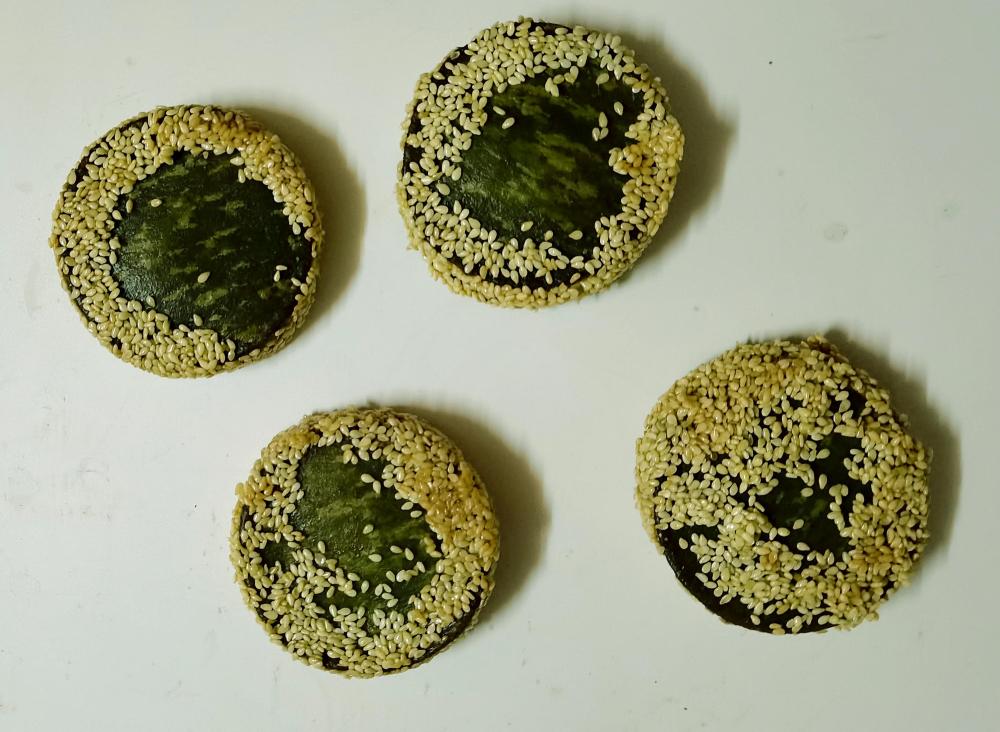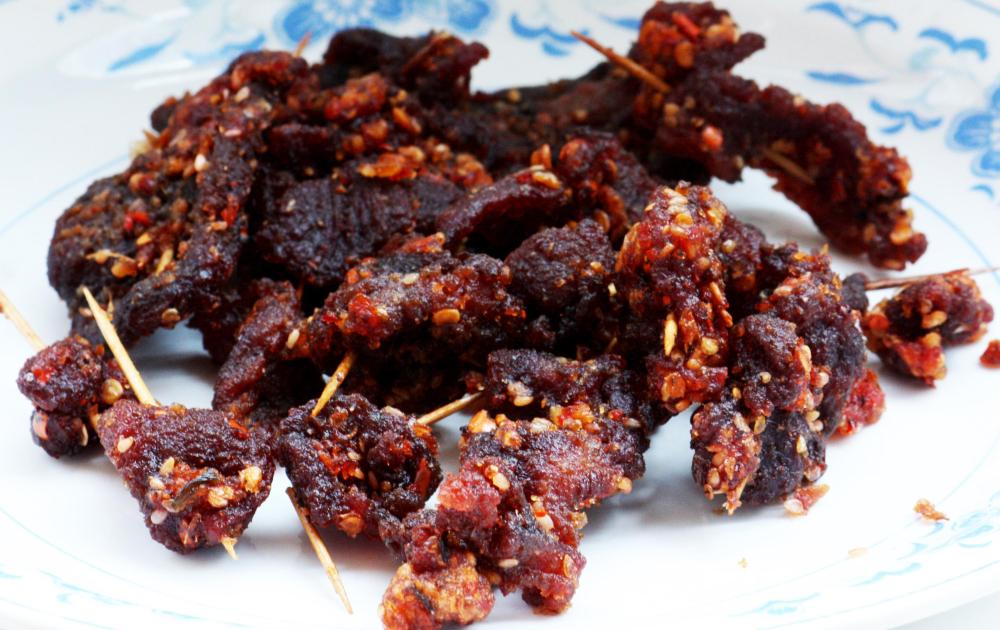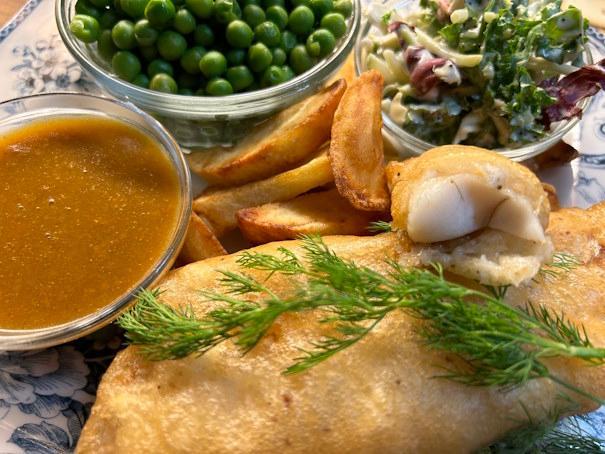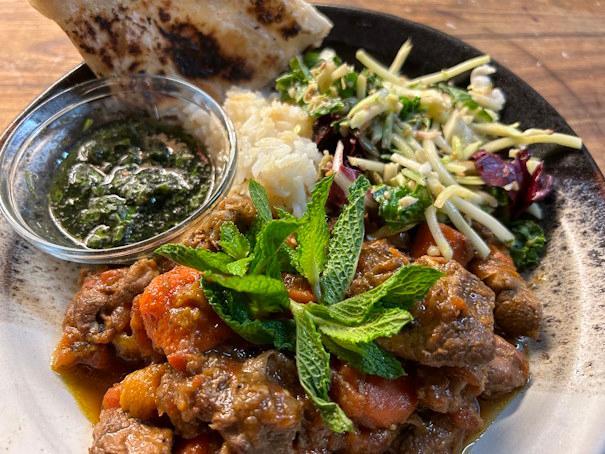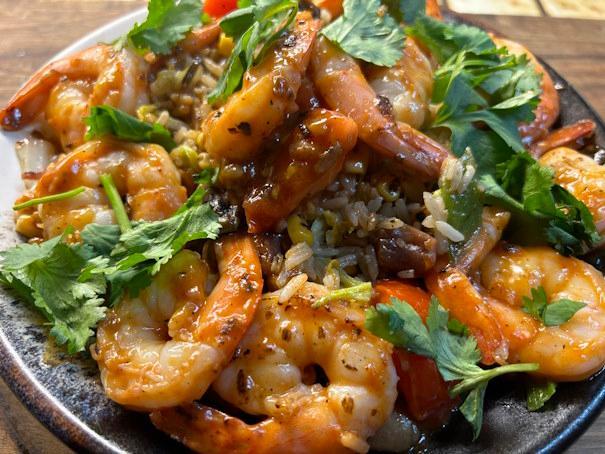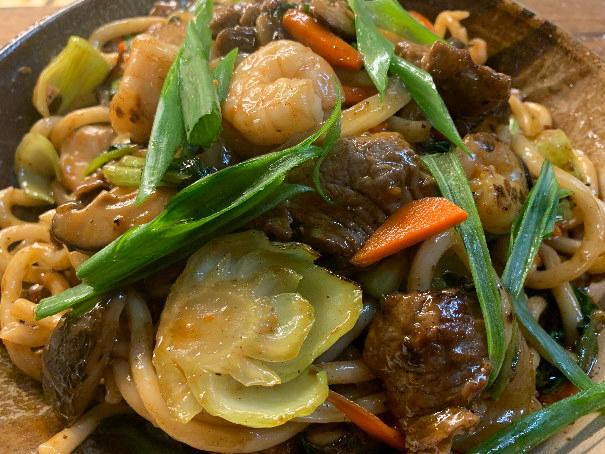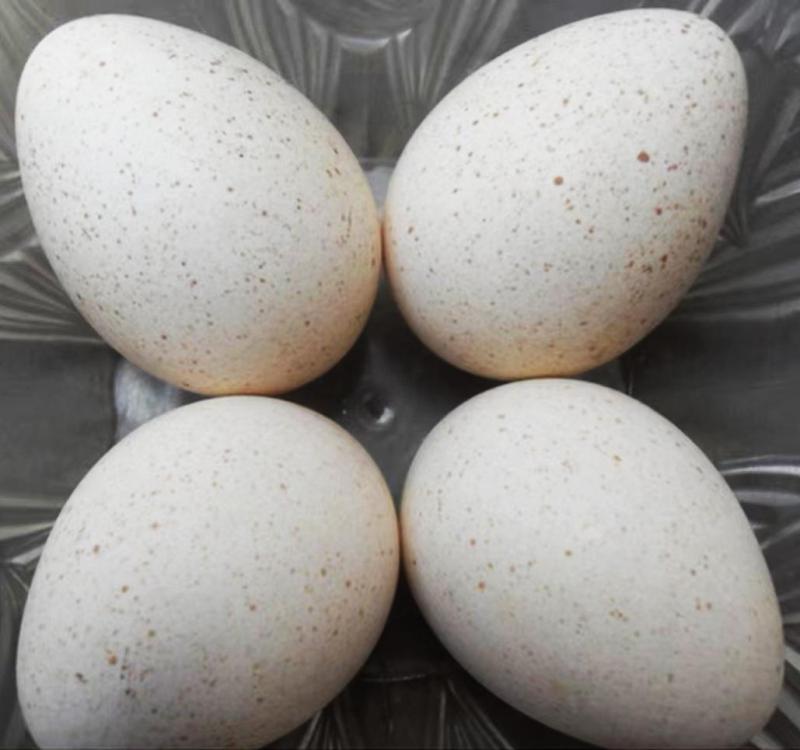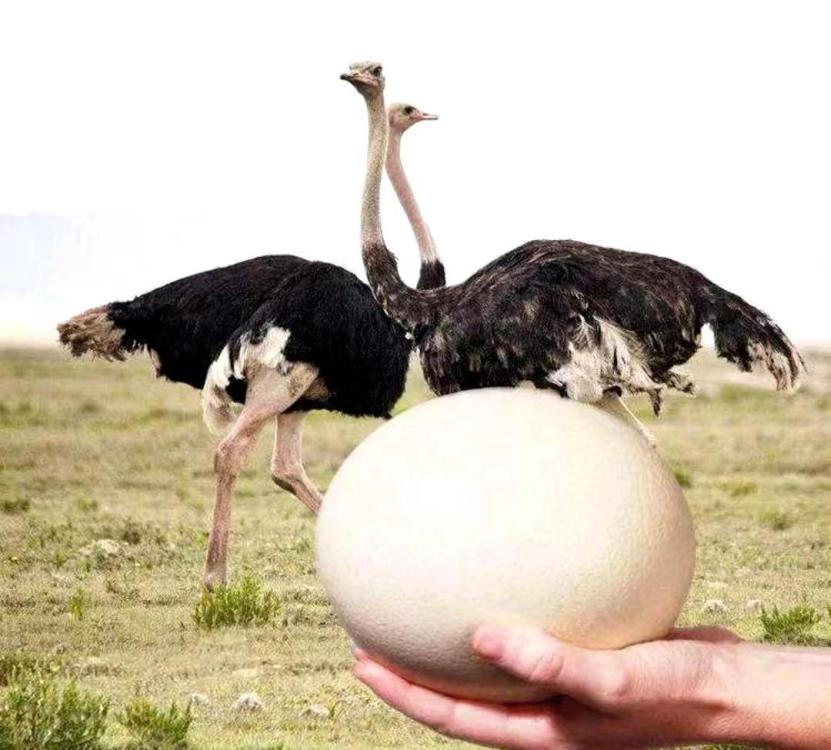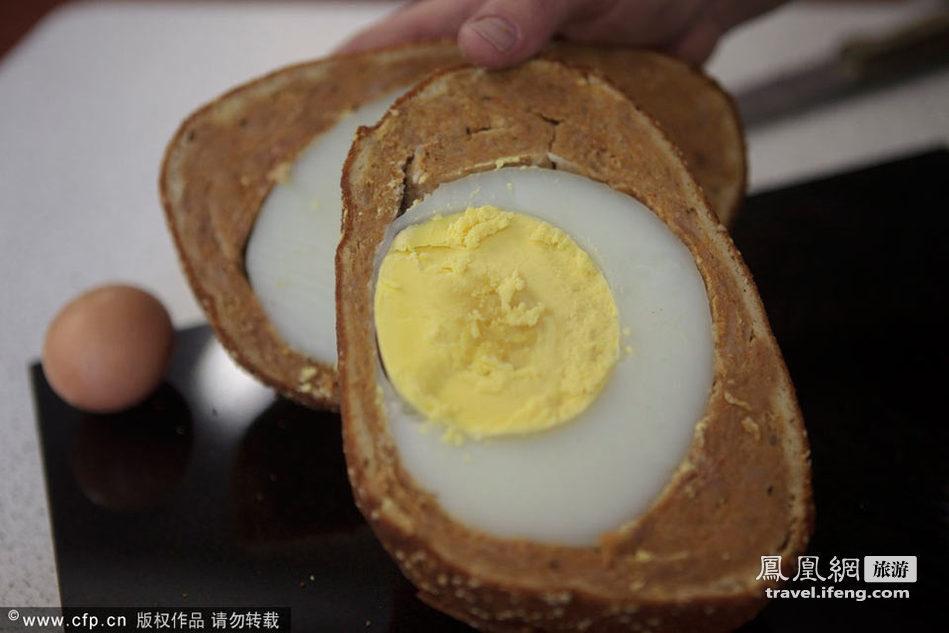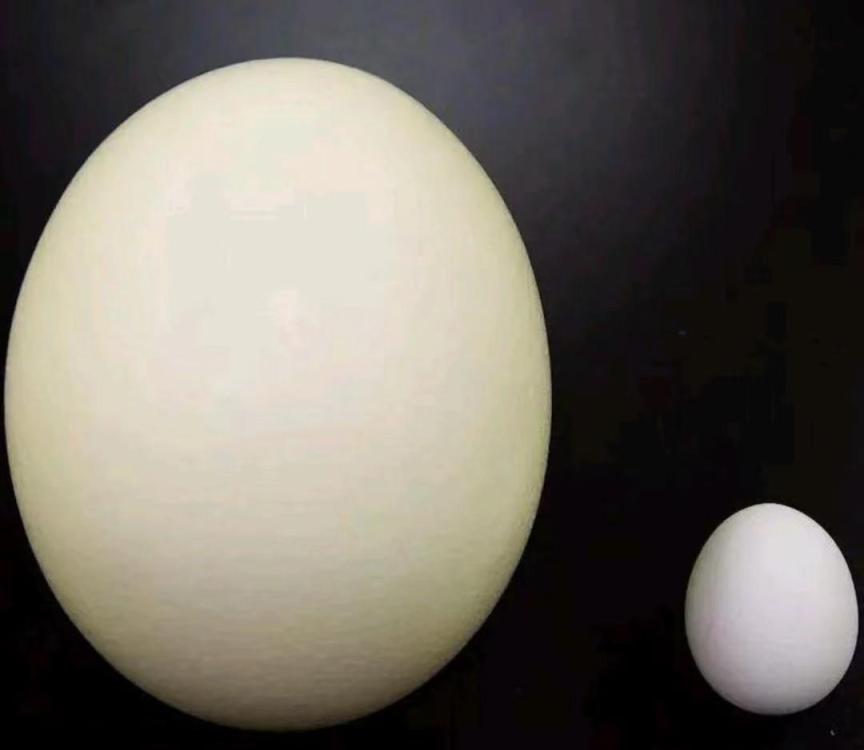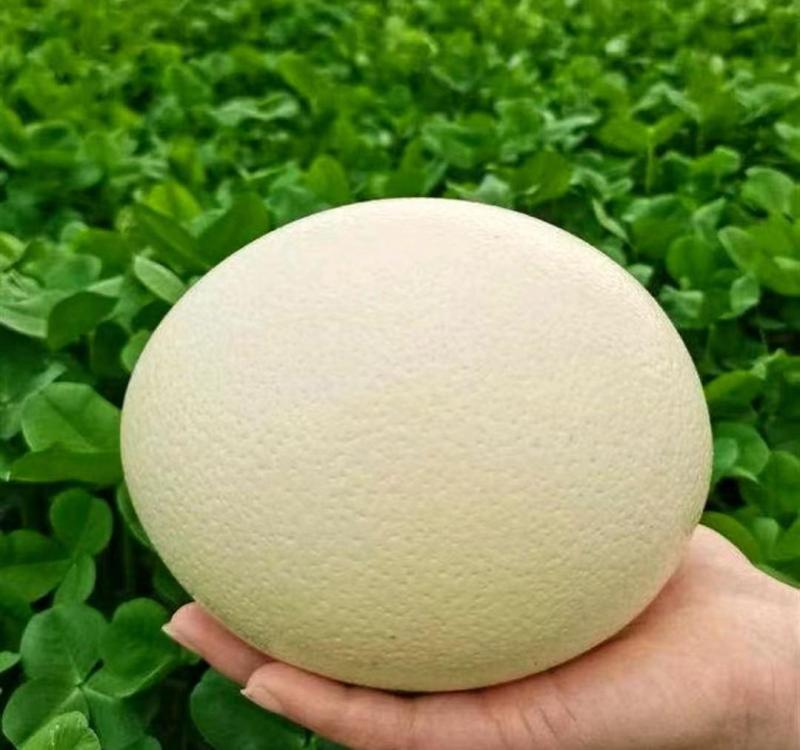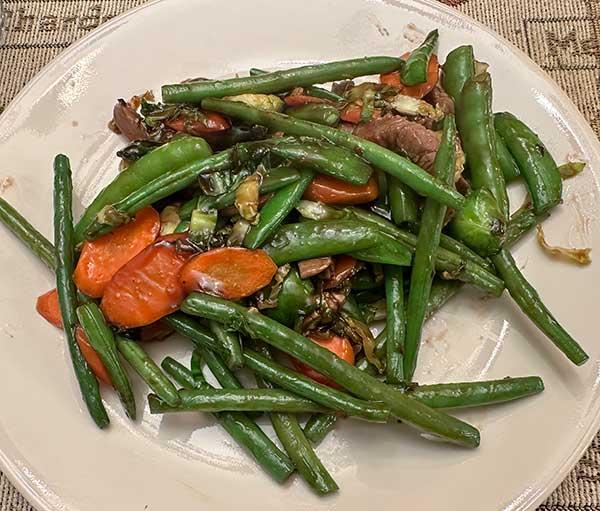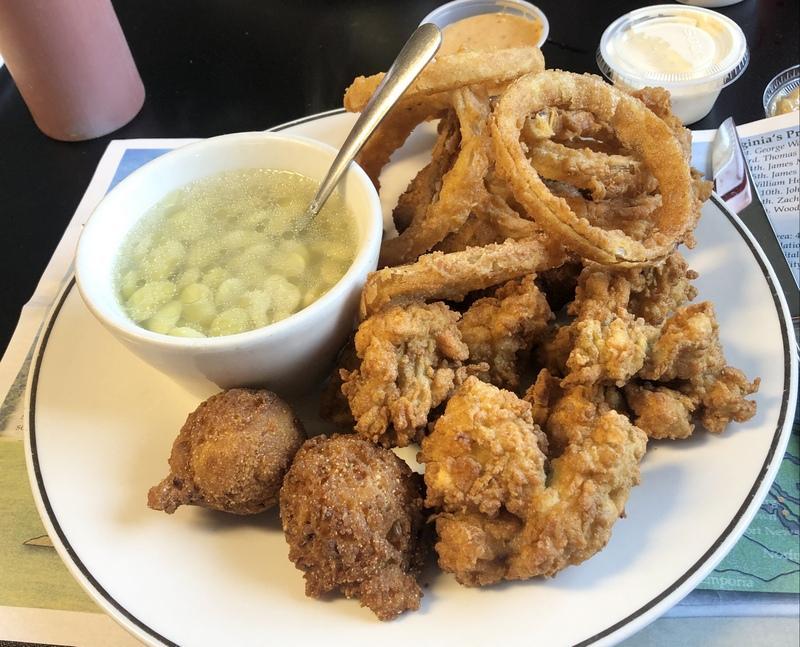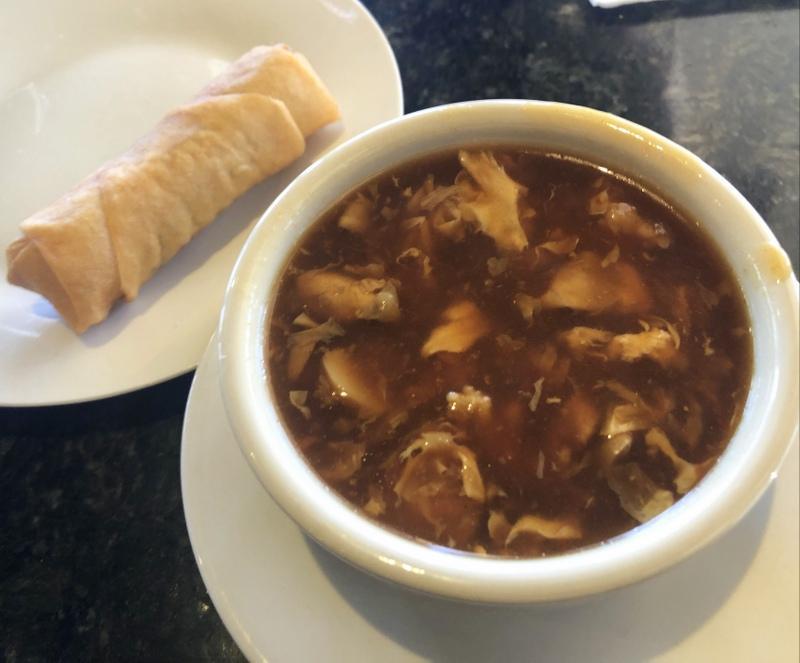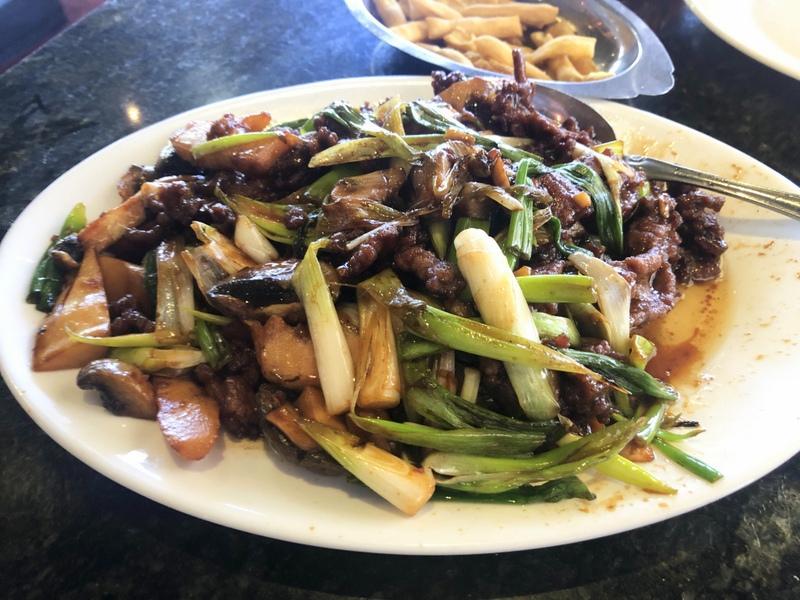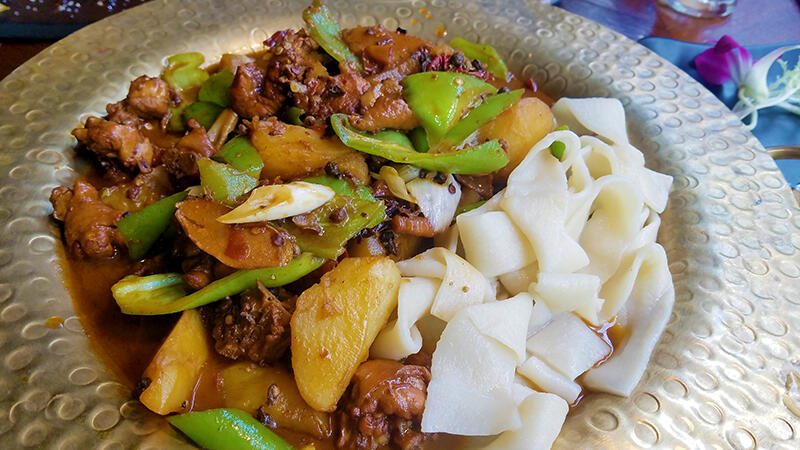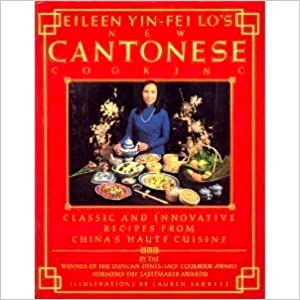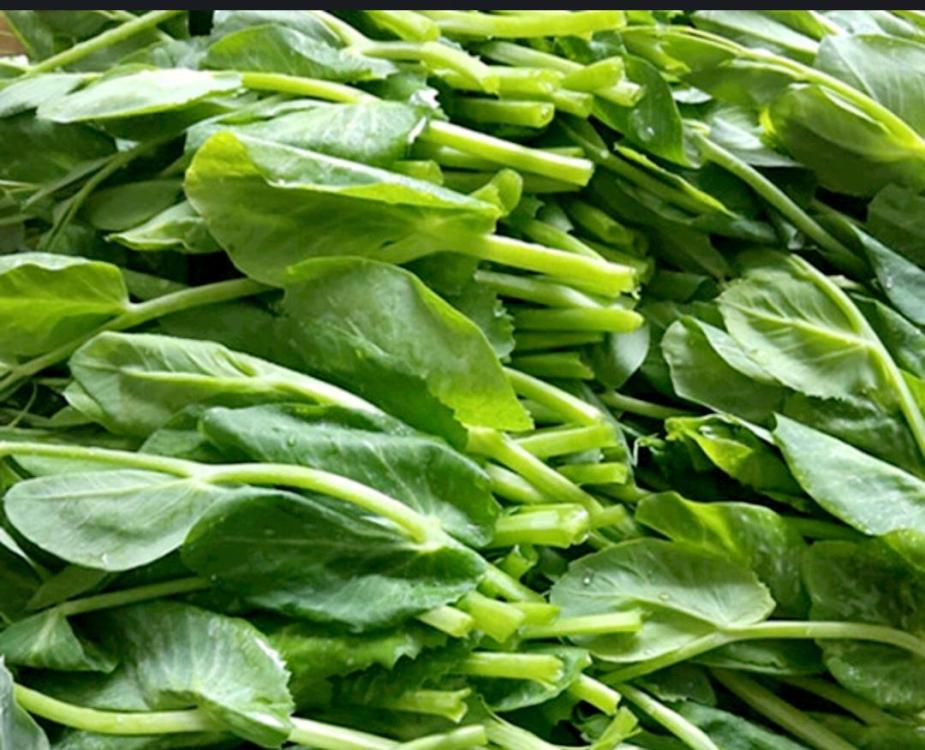Search the Community
Showing results for 'wok'.
-
One of my favourite snacky things is 牙签牛肉 (yá qiān niú ròu), literally 'toothpick beef'. Beef tenderloin is thinly sliced and cut into roughly 3 x 5 cm / 1¼ x 2 inch pieces. These are marinated overnight in soy sauce , Shaoxing wine, with flaked chilli, cumin powder, Sichuan peppercorns and crushed garlic. Next day, the pieces of meat are threaded onto pre-soaked toothpicks and briefly fried in a wok. The beef cooks almost instantly. After draining the beef, they are tossed in more chilli (if required) and sesame seeds, then served. This originated in Sichuan but is now available all over. Some supermarkets sell them ready made, but most people make them from scratch. It's important not to overcook them, something no one has apparently told he supermarkets. Great for snacking or finger food at a buffet - or beer food.
-
Spent a few days in Winnipeg while second was working in the city. He and family moved to St John's, and he works remotely. It's great that the company will fly him back, 3 times this year for big project sessions. Lamb is his favourite meat, but the rest of his family are not fans. I stock-pile lamb chops when Safeway has "reduced price" stickers, sol I sous vide 20 and took them into the city (finished on top of stove before supper). We were staying with our daughter and s-i-l, so lots for everyone with a couple left over for lunch. He went home happy! We were too busy visiting and eating for pictures! Got home just before weather turned nasty with snow, freezing rain, and icy roads. TransCanada was closed from just west of Brandon to Winnipeg by supper time! Supper was quick: Sauteed shrimp and fried rice My wok needed a good scrubbing, so it was needing a re-seasoning. Fish and chips (with curry gravy) filled the bill! Seems we never get tired of lamb! Cut up a small boneless lamb leg and braised with Moroccan spices in the oven. Made the house cozy and fragrant! Late supper last night! We had 9th birthday cake with our youngest granddaughter last night. Came home to Shake'n'Bake chicken, delicious cabbage rolls made by a pal, and steamed green beans. I had it all cooked before we went for dessert!
-
Prep takes longer than the actual one-wok cooking! Yaki Udon noodles with beef, shrimp, shitaki mushrooms, bok choy, carrots.
-

A pictorial guide to Chinese cooking ingredients
liuzhou replied to a topic in China: Cooking & Baking
Let’s talk S:火鸡; T: 火雞 (huǒ jī). Literally meaning ‘fire chicken’ this is Meleagris gallopavo, the turkey, probably not a bird you associate with China and you’d be right. Between 2001 and 2005, China imported 386,000 tons of turkey from the USA. 386,000 tons of turkey may sound a lot, but works out to just over ¾lb per person over five years - 2½ ounces a year, if my mathematics is correct! If not correct, and it seldom is, it’s still a miniscule amount. Little has changed in the last 25 years. China does raise turkeys but on an extremely limited scale; it just isn’t a bird on people’s radar. They know about turkeys but see them as some sort of grotesque, mammoth lump of meat that they wouldn’t fit in their wok. Most turkeys sold for meat are sold to American and Canadian ex-pats in Shanghai and Beijing for their respective Thanksgiving celebrations. For 15 years, I did have a second home in the countryside next door to a man who was a part-time hobbyist turkey breeder. He sold the meat for pet food and the feathers to the garment industry and theatrical milliners. He didn’t sell eggs. The reason he and most turkey breeders worldwide don’t sell usually sell the eggs is simple economics. They birds are to blame! They reach optimum age for selling as meat before they begin to ovulate and even then only lay one or two eggs a week, if they’re in the mood. The cost of feed etc while waiting for the eggs makes little sense to the farmers as they’d have to sell the eggs for a minimum of around 4元 each, which few would be willing to pay. I can buy a dozen hen’s eggs for the same price while the farmer can make more from hatching the eggs and raising and selling more birds. Turkey eggs PD Image That said, if you do get hold of one they are perfectly edible. About 50% larger than the average (50 gram) chicken egg., they taste much the same but are a bit creamer. Yes, I have eaten one, but not in China. -
Another tuna taco. This time, I used planned-over Kimchi Poke from Cook Real Hawai'i (as seen in yesterday's breakfast) to make the Wok-Fried Poke from the same book. Sheldon says this was a way to use up leftovers after a party the night before until Sam Choy elevated it into a speciality at his restaurants. It's a nice preparation, only seared in a hot, hot pan for less than half a minute so each cube is cooked on the outside but still raw in the middle. My version is not elevated at all, just stuffed into a tortilla with a kimchi slaw made with red cabbage and radish. Avocado might have elevated it but I was out!
-
A few random thoughts. Asko makes an induction cooktop with a gas wok burner. I would have preferred that to my all gas one had it been available when I was remodelling. I don't want to give up counter space to a steam oven so a built in one would be fine but was out of my budget. I like having on decent sized sink instead of two small ones but if you have room for two large ones... I have cupboards hidden away under the island for those things that seldom never get used but I don't want to get rid of. One of my favourite things is a narrow cupboard next to the oven and cooktop with a basket that pulls out for keeping salt, pepper, oils, etc. handy for cooking. One mistake was putting three large cupboards above one of the counters when it should have been 4 narrower ones. Turns out the large doors get in the way when they are open and it is a pain to squeeze by the island or keep closing and reopening them when putting dishes away.
-
We have 18 stovetop pots and pans that have met our needs for many years. All-Clad stainless-lined aluminum sauté pan – large: Probably our most-used piece of cookware because I love to bang pans around while cooking and it does a bang-up job of browning, searing, and quickly reducing sauces. Falk stainless-lined copper saucieres (large, medium, small): I use these frequently but Mrs. C finds them too heavy. Great do-anything pans for sautéing and searing to stews, braises, delicate sauces, and caramelizing sugar. The small one melts chocolate beautifully without a double boiler. Thin cast iron woks (medium, large): The medium one gets lots of use and has built up a remarkably durable non-stick patina. Best 20 bucks I ever spent on cookware, and still available from the Wok Shop. The large wok gets used less often so the patina is not quite as remarkable. All-Clad saucepans (large, small): Mostly used to steam rice, but also handy for soups, sauces, and deep-frying. Staub Dutch oven: Glad to have it, even though we don’t use it very often. All-clad stockpot with steamer inserts – very large: Mrs. C uses this to make chicken stock and steam vegetables. Non-stick frying pans (small, medium, large): Useful for cooking fish and eggs. These get replaced every once in a while. Cast iron flat pan: Used to roast spices, garlic, and dried chiles. Cast iron skillets (large, small): Large one is for searing meat. Small one is of unknown providence and rarely used but it is an heirloom from Mrs. C’s family, so . . . Non-stick saucepans (large, small): Mostly used to boil water for pasta or vegetables. If these went away I would not be sad. Does a kettle count by official rules?
-
Thanks for reviving this topic! I think I missed it the first time around. I find that my taste in wooden spoons has changed. Until recently I used unfinished wooden spoons for, say, mixing dough. I had a beautiful one almost as long as my forearm that I think was made of pine. I say "had" because I recently donated it to a garage sale. I've found that my glossy bamboo spoons, that came with a wok set, work much better and aren't as sticky. I've never tried them in the dishwasher, but it's nice to know that they'll survive it.
-
Movement in the pan is a big factor. Sure you've seen the highy active wok action in videos. And oil temp. Its a dance
-

A pictorial guide to Chinese cooking ingredients
liuzhou replied to a topic in China: Cooking & Baking
...and finally we reach S: 鸵鸟; T: 鴕鳥 (tuó niǎo), Struthio camelus, the largest bird on earth, the ostrich. The bird is a multiple record holder. It can run at 55 kmh / 34 mph) for sustained periods but reach 70 kmh / 40 mph in short sprints. This makes it the fastest land bird on earth. It also lays the largest eggs but not while running! And it lays the smallest eggs when compared to body weight. Native to Africa, they have been introduced in Australia, New Mexico and Israel where they have gone feral. They are also farmed on varying scales across the globe. There are a large number of farms in China, especially in the central-east. Distracting the birds while collecting eggs on a farm Although, in theory, ostrich eggs can be cooked the same way as any other eggs, in practice, they do present their problems, nearly all related to their size. An ostrich egg is usually said to be the equivalent of 24 chicken eggs and weigh around 1.4 kg / 3 lbs. They each contain about 2,000 calories. Ostrich and Chicken eggs The shell is thick and hard (they can bear the weight of a man without breaking) necessitating some mechanical aid in accessing the contents. A drill or kitchen saw is the normal method. Then you need appropriately large pans and kitchen equipment not found in the average kitchen. Boiling an ostrich egg to medium takes an hour; hard boiled need at least 90 minutes. I suppose you could poach one in a bathtub. Or sous vide for a week or so. Omelettes are the way to go if you can find a big enough pan for a 24 egg omelette. Someone has made a scotch ostrich egg, perhaps in a wok from a commercial kitchen. A British chip shop fryer might manage it, but if you don’t have a chip shop, it would be a problem. Ostrich eggs sell for between 100 and 200元 / $14-28 USD a piece. Those at the lower end tend to misshapen although the contents are the same. As with emu eggs, the shells are used as ‘çanvases’ for decorating, so pristine shapes are preferred. Happy Easter to those who celebrate. Easter eggs are not something I can find in China. Yet. (All images in this post from Meituan food delivery app, China) -
Had one slice of tri-tip left over and just scored some nice green beans and snap peas, so I made a stir fry with "broccoli beef sauce" from Kenji's Wok book. I addition to snap peas and green beans there were carrots and sliced/shredded Brussels sprouts.
-
We went for a short (1 overnight) trip to the Northern Neck (a region in Virginia off the east coast) to celebrate our 42nd wedding anniversary. Stopped in Tappahannock for lunch at the To Do Café. I had the “pick two” with oysters and shrimp: Served with hush puppies, butter beans and excellent onion rings: Mr. Kim had the catfish, hush puppies, and housemade potato chips: Everything was great – we just happened upon it online and picked it because it was close to the museum we went to, and we liked the menu! Mr. Kim was out of town judging a BBQ competition, so I was on my own for Sunday brunch. I gave a nearby, but never yet visited Chinese restaurant a try. I’d heard that they had a Sunday buffet and I love buffets, but Mr. Kim doesn’t so it seemed perfect timing. Well, they don’t have a buffet, but I went ahead and had lunch with mixed results. Spring roll and hot and sour soup: The spring roll was fine – nothing special and the soup was incredibly peppery. Even Mr. Kim thought so when he ate the leftovers. The Mongolian beef: The menu said that this was flank steak fried with spring onions and bamboo shoots. It was easily half assorted mushrooms and lotus root. Really vegetable heavy, but the flavor was good – not overly spicy. The side dish of fried rice was a nice surprise: Nowadays when they ask if you want white or fried rice with your meal, I feel like you’re not really getting fried rice when you choose that option. Even at good places, it always just tastes like unseasoned plain brown rice. This was definitely fried in a wok with seasoning and some vegetables. I don’t imagine I’ll ever go back there with Yen Ching (“our place”) around the corner, but I’m glad I tried it after almost 30 years of living within 2 miles of it! Another lunch was leftovers from a dinner out the night before: Half a Sailor and some hard to find Wise salt and vinegar chips – the best! A Sailor is a Richmond VA sandwich tradition. Knockwurst, pastrami, and Swiss on grilled rye bread. It’s probably available all over the place, but if you Google “Sailor sandwich”, the references are all Richmond. I’m trying really hard to get through a bunch of OLD stuff in the freezer and pantry. So weird meals that other people purchased but aren’t eating. These taquitos were yesterday’s lunch, I guess: They were crunchy 🙄😑.
- 247 replies
-
- 16
-

-

-
Big Plate Chicken - 大盘鸡 (dà pán jī) This very filling dish of chicken and potato stew is from Xinjiang province in China's far west, although it is said to have been invented by a visitor from Sichuan. In recent years, it has become popular in cities across China, where it is made using a whole chicken which is chopped, with skin and on the bone, into small pieces suitable for easy chopstick handling. If you want to go that way, any Asian market should be able to chop the bird for you. Otherwise you may use boneless chicken thighs instead. Ingredients Chicken chopped on the bone or Boneless skinless chicken thighs 6 Light soy sauce Dark soy sauce Shaoxing wine Cornstarch or similar. I use potato starch. Vegetable oil (not olive oil) Star anise, 4 Cinnamon, 1 stick Bay leaves, 5 or 6 Fresh ginger, 6 coin sized slices Garlic. 5 cloves, roughly chopped Sichuan peppercorns, 1 tablespoon Whole dried red chillies, 6 -10 (optional). If you can source the Sichuan chiles known as Facing Heaven Chiles, so much the better. Potatoes 2 or 3 medium sized. peeled and cut into bite-sized pieces Carrot. 1, thinly sliced Dried wheat noodles. 8 oz. Traditionally, these would be a long, flat thick variety. I've use Italian tagliatelle successfully. Red bell pepper. 1 cut into chunks Green bell pepper, 1 cut into chunks Salt Scallion, 2 sliced. Method First, cut the chicken into bite sized pieces and marinate in 1½ teaspoons light soy sauce, 3 teaspoons of Shaoxing and 1½ teaspoons of cornstarch. Set aside for about twenty minutes while you prepare the rest of the ingredients. Heat the wok and add three tablespoons cooking oil. Add the ginger, garlic, star anise, cinnamon stick, bay leaves, Sichuan peppercorns and chilies. Fry on a low heat for a minute or so. If they look about to burn, splash a little water into your wok. This will lower the temperature slightly. Add the chicken and turn up the heat. Continue frying until the meat is nicely seared, then add the potatoes and carrots. Stir fry a minute more then add 2 teaspoons of the dark soy sauce, 2 tablespoons of the light soy sauce and 2 tablespoons of the Shaoxing wine along with 3 cups of water. Bring to a boil, then reduce to medium. Cover and cook for around 15-20 minutes until the potatoes are done. While the main dish is cooking, cook the noodles separately according to the packet instructions. Reserve some of the noodle cooking water and drain. When the chicken and potatoes are done, you may add a little of the noodle water if the dish appears on the dry side. It should be saucy, but not soupy. Add the bell peppers and cook for three to four minutes more. Add scallions. Check seasoning and add some salt if it needs it. It may not due to the soy sauce and, if in the USA, Shaoxing wine. Serve on a large plate for everyone to help themselves from. Plate the noodles first, then cover with the meat and potato. Enjoy.
-
AT 85. RIP. Long ago and living in California, I was teaching myself to cook; starting with Chinese food. This was mid-70s (yeah, I'm old). I took lessons, bought cookbooks, my first wok and Chinese cleaver, etc. Lo's books were always a great resource, and as I started to explore more regional styles, this one (eG-friendly Amazon.com link) was especially useful... Published 1988. From the NY Times:
-
After several years of looking to remodel the kitchen, it's finally time to get it started. One of the issues that concerns me the most is what gas range to get. I've asked around at the appliance stores and they haven't been the most helpful. Whenever I asked about the difference between the higher end stoves, they keep telling me that they're all good. How's that suppose to help me choose? So, here are things I'm looking for and hopefully someone can give me some advice: 1) Prefer a stove that can handle a low simmer and getting a wok red hot. 2) Continuous grate (or some other option) that makes moving pots and pans to the different burners easily. 3) Easy clean up - maybe a tray that can be pulled out and wiped, etc. 4) Wok ring option would be fantastic. What brand have you used that you like? What will my approximate cost be for a 30 or 36 inch? Also, the kitchen is not very big, so I'm thinking a gas range with the oven (convection) on the bottom would be best. Any opinion/suggestions on that? TIA
-
Nearly always does. It is one good reason why the wok became so popular in China and beyond; fuel-saving. Every day, I hear my neighbours preparing meals chopping, mincing, etc. They start early in the morning. The sound of China is of cleavers hitting chopping boards. Millions of them. Cooking typically takes no time at all.
-
I tend to differentiate. We get pea sprouts and we get pea shoots The sprouts need wilting at most. The shoots need a minute or two in the wok. The only difference really, is age. If it's any comfort the Chinese names are equally confusable.
-
Cue The Three Degrees' "When Will I See You Again" Dumplings (filled with beef mince, Speck and calf's liver) Prawn roe brought back from Hong Kong Froze the roe in small portions. They only need a quick toss in a hot wok/pan to release the intense prawny taste. Egg-tomato soup and steamed chard (Turkish market probably sources green house chard) And a Belgian beer Are we in love or just friends? When will I see you again, Hong Kong and Macau?
-
No, I haven’t purchased any 2022 cookbooks yet but I thought I’d start a thread for discussing them. Eat Your Books has a long list of upcoming releases, sorted by month here. Time magazine has a list of 'most anticipated' 2022 cookbooks here. The only one I’ve pre-ordered is Six California Kitchens (eG-friendly Amazon.com link). Author Sally Schmitt and her husband opened and operated The French Laundry in Napa for 16 years before selling it to Thomas Keller. There's a little video of her here. There are others I’d like to read and will recommend that my library purchase. I might end up getting The Wok: Recipes and Techniques (eG-friendly Amazon.com link). Grace Young says: but is Kenji is really going add much to her marvelous The Breath of a Wok and Stir-Frying to the Sky's Edge? I dunno. Anyone got any must-haves coming out this year?
-
My cookware addiction, like all of my consumptive addictions, is mercifully self-limiting. Once I (thoroughly) cover the bases, I don't feel a strong pull to buy more. If a new pot or pan isn't going to do much for me functionally, I don't find it all that desirable. But if I've got a particular need for a pan, or if there's an obvious gap in my batterie, I feel the urge. Here's a quick outline of what I have with some quick commentary. From All Clad I have 3 D3 saucepans (or pots, as normal people call them) with lids in 1.5qt, 3qt, and 4qt sizes. That's a pretty good range, though I kind of want a 2 or 2.5qt saucier to fill in the gap between the 1.5 and 3qt pans. I also have two D3 skillets, 8 and 12 inch. These get used less frequently than they used to, as I tend to use my nonstick and carbon steel skillets more often for some reason. The D3 skillets are slightly lighter weight than I prefer, but they're still great performers. Moving away from the D3, I have the D7 12" skillet. It is big, bad, and in charge. Huge and heavy and awesome. It's my stainless alternative to cast iron or carbon steel for searing. The stainlessness makes it great for making acidic pan sauces, which are my preference. I'd like to have a 10" Copper Core saute pan to do some shallow frying in. My last 2 All Clad pans are stock pots. The first was featured above: a Copper Core 8qt stock pot. It's more of a soup and pasta pot than a stock pot, given its small size. But it's great for soups. Nice big flat bottom also sears well and the high walls mostly contains the spatter. In Stock Pot country, I also have a Mystery Line All Clad stock pot with steamer inserts that I was gifted for my wedding many years ago. I think it's 12 qts. Unfortunately, it's not induction compatible. I basically only use this to make larger quantities of stock on the stovetop or in the oven. But I mostly use pressure cookers for stock. So yeah, it's not super useful. Maybe if I get into making tamales, or if I want to fry a turkey on my wok burner. Or something. My only other piece of stainless cookware also mostly gets used for stock making. It's a cheap Presto 8-qt pressure cooker with a disc bottom that works pretty okay. I wish I had a fancier pressure cooker, but I bought this when I was a grad student just getting into cooking in a serious way. It was a bargain, and I'm glad I have it. The base works very well as a standalone pot, with the only drawback being the handles that aren't oven-safe. I'd happily swap it out for a Kuhn Rikon or a Fissler though. Who wouldn't? And I have an Instant Pot too, so... That covers my stainless cookware. Before I go into the other metals, I'd like to give a shout out to my 3 Alonon copper nouveau nonstick skillets (8, 10, and 12 inch). Unlike most nonstick pans, which are thin and tend to overheat locally, these have a thick layer on the bottom of aluminum, copper, and stainless (at least I think that's what they are). It's not a lot of copper, but it's nice. The sides are very curved/sloped, which I don't prefer, but the shape works well for tossing food. They're heavy nonstick pans that heat evenly and don't lose all their heat when you throw a lot of food into the pan. Unfortunately, Anolon stopped making them. It's almost time to replace them. Sad times. Nonstick pans are the only disposable pans in my kitchen. Everything else should last a lifetime. For cast iron, I have a 12" Lodge skillet I got as a broke undergrad. Maybe the best $20 on kitchen equipment I've ever spent. I also have 8 and 10 inch vintage skillets that I inherited from my grandmothers. That's pretty cool. They mostly get used for cornbread duty. I also have a 4.5qt Lodge dutch oven that I use mostly for deep frying on induction. It's also a preferred vessel for certain "no knead" bread recipes, but I don't bake ever. Ever. Finally, I have an enamel coated Tramontina 8 qt dutch oven that was recommended by Cook's Illustrated in like 2008. That's what I use for braises, pot roasts, and heavy searing. It's great, and I think I got it for like $50 at Walmart 15 years ago. A great purchase. My parents have all kinds of Le Creuset pieces, and this compares favorably. In carbon steel, I have a full set of the original Darto skillets as well as their No. 34 paella. I think the No. 34 paella is my favorite pan overall in the kitchen. It's just a huge thick slab of black steel. Incredible searing power. Great for shallow frying, large format fajitas, or nachos. It almost lives on my stovetop. The other Dartos are mostly used for searing or sautéing. I wish I had a No 27 paella to roast things in my Breville Smart Oven. Maybe some of the other smaller paella things. All my carbon steel is from Darto except for a 36cm wok that I got from Korin. I've used it twice for actual wokking. It's great, but I never use my wok burner. That's more of a personal failing than a problem with the cookware. I mostly use it for deep frying. Go outside to fry my fish and chips over a 100K BTU burner. You use less oil in a wok and don't have to worry about bubble-over. Basically an outdoor deep fryer, as far as I'm concerned. The wok itself performs great though and the handle doesn't get hot even though it's metal too (even over my monster wok burner). I would buy this wok again and again, but I'd buy it in this slightly smaller 33cm size. The final three pieces of cookware I'll list are the ceramic donabes I purchased from Toiro Kitchen. I have one that is designed to make rice, and that's my official rice-maker. I also have a large one designed for smoking that was very expensive and is very underused. I feel bad about that, because it was my most expensive piece of cookware and I've used it less than 10 times. I am going to work on changing that though. Even less used is a tagine style donabe. I've used it to bake bread and to steam roast potatoes. Been meaning to make some actual tagines, but that never seems to happen. I think the base of it might work well as a comal though. So maybe it's actually a 2-in-1 device that I never use! At least it's not a unitasker! All told, I think that's 24 pieces. Math was never my strong suit.
-
It's chilly this morning and I don't feel like getting out of bed until my husband turns on the heat, so.......it's time for a rant! You've heard it before, of course, but that so-called lasagne was one of the few times I've had to confront in real life the vegan substitution problem. My dwindling circle of friends as I get older are omnivores and vegetarians, but not vegans. When I think over my (also dwindling) repertoire of hits I realize that quite a few of them are, in fact, totally vegan. Chinese stir-fries top the list if you like a variety of vegetables and greens and tofu. And it's easy, although good equipment like a wok and a range with strong BTU's helps. As @liuzhousuggests, Italian pasta dishes also offer lots of options. Besides pesto, if you don't make it with cheese, the variety of meatless tomato sauce dishes is wide. I particularly like to add garlicky sautéed cauliflower or artichokes. Grated hard cheese for a topping can be optional for non-vegans at the table. Casseroles using a variety of grains and veggies baked in the oven are also no brainers, and can be really satisfying. And curries! Any number of great vegetable curries can be made using coconut oil instead of butter. Cauliflower and tomato curry is a favorite of mine. Skip the raita and serve it with fresh cooling fruit. Grain salads are excellent. I have one I adore that's made with bulgur wheat, swiss chard, olives and pine nuts, with a tangy shallot dressing. Cuisines that don't rely on butter offer a lot of choices. None of the many vegan dishes I often make don't require a banner headline advertising that they are vegan. They are not called burgers or lasagne. They just don't include animal products nor do they try to recreate versions of dishes that showcase eggs, cheeses or other dairy or meats. My mother always made her potato salad with an olive oil dressing, like for a nicoise; she was not a fan of mayo. For soups or beans, make a really good vegetable stock. That alone goes a long way toward flavor. Many "cream of" green soups are great without the cream. Croutons fried in garlic olive oil to garnish soup cannot be overstated! Okay, done. .
-
todays NYTimes Food section goes over 5 foos myths : https://www.nytimes.com/2024/04/08/dining/kitchen-myths.html for review purposes : 1 ) Truth or myth: Never use soap to wash a cast-iron pan. '''' The prohibition against soap comes from a time when all soap was made with lye, which could eat through a patina in minutes. And it’s true that most of the time, soap is unnecessary. Most of your cleaning power should come from hot water and gentle scrubbing or brushing, the way cast-iron pots like Chinese woks and Indian kadai are traditionally cleaned. '' 2} Truth or myth: Pasta cooking water should taste as salty as the ocean. '''' To test the myth, I cooked eight batches of spaghetti at salt levels ranging from none to Pacific Ocean (3 percent) to Mediterranean Sea (4 percent). I can confirm that seawater is too salty. As I worked my way up from a teaspoon to a tablespoon of kosher salt per gallon, the pasta was noticeably undersalted, and its flavor got lost in the finished dish. I most liked water that tasted as salty as a light chicken stock, or two tablespoons per gallon of water. ''' 3) Truth or myth: Always wash rice until the water runs clear before cooking. ''' For the indica rices (jasmine and basmati), the difference between unwashed and rinsed rice was imperceptible. For the japonica, to my taste the washed rice had just a microdose less starch, taking it from already excellent to perfect. ' 4 ) Truth or myth: Have all of your ingredients prepared and your cooking oil heated before starting to cook. ''' But for slower food, like soups and stews, it’s perfectly fine to start the pan over low heat, and turn the heat to high only once everything is in. Diced vegetables like onions and celery take longer to cook than minced aromatics like ginger and garlic, so put the vegetables in first. They will soften, and then turn golden, and then — quite a lot later — caramelize. (Speaking of: Another persistent myth in American cooking is that it takes 8 to 10 minutes to caramelize onions, which is pretty much impossible unless you are a restaurant chef and stirring onions over high heat is your only job.) ''' 5 ) Truth or myth: Always brown meat at the beginning of the cooking process, to ‘seal in’ the juices. ''' If you’ve ever spent an hour patiently browning chicken thighs in batches, only to move to the next step and find you’re about to submerge them in liquid that will reduce the skin to flab, you may have wondered what all that work was for. Many traditional stews are built without it: a Central American jocón, a West African mafe and a Provençal daube all skip browning and rely on other ingredients to deepen their flavors. '' the whole article might be behind a paywall. its possible your public library card may be used , through the libraries site online to view the NYTimes , WSJournal and other newspapers . of course , if you live in a country that shuns P.L. , you might be out of luck.
-
Always hot oil in Chinese cooking. Heat the empty wok, then add oil, when shimmering / beginning to smoke it's ready to fry.

